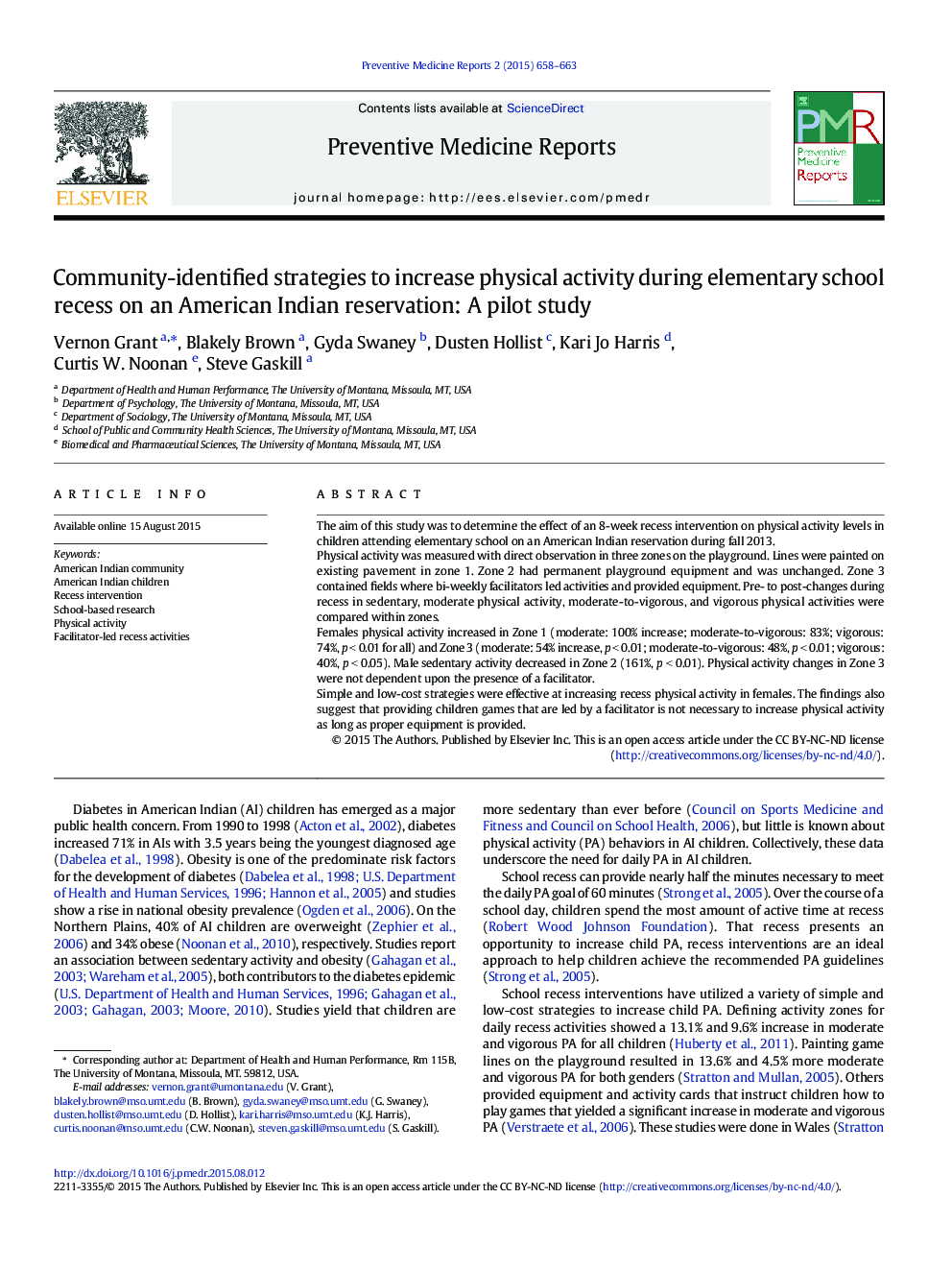| Article ID | Journal | Published Year | Pages | File Type |
|---|---|---|---|---|
| 4202383 | Preventive Medicine Reports | 2015 | 6 Pages |
•The intervention strategies were identified directly from the children.•The 8 week recess intervention split the playground into 3 zones.•In one of the zones we offer bi-weekly facilitator-led activities.•Females responded more to the intervention compared to males.•Simple and low-cost strategies were effective at increasing physical activity.
The aim of this study was to determine the effect of an 8-week recess intervention on physical activity levels in children attending elementary school on an American Indian reservation during fall 2013.Physical activity was measured with direct observation in three zones on the playground. Lines were painted on existing pavement in zone 1. Zone 2 had permanent playground equipment and was unchanged. Zone 3 contained fields where bi-weekly facilitators led activities and provided equipment. Pre- to post-changes during recess in sedentary, moderate physical activity, moderate-to-vigorous, and vigorous physical activities were compared within zones.Females physical activity increased in Zone 1 (moderate: 100% increase; moderate-to-vigorous: 83%; vigorous: 74%, p < 0.01 for all) and Zone 3 (moderate: 54% increase, p < 0.01; moderate-to-vigorous: 48%, p < 0.01; vigorous: 40%, p < 0.05). Male sedentary activity decreased in Zone 2 (161%, p < 0.01). Physical activity changes in Zone 3 were not dependent upon the presence of a facilitator.Simple and low-cost strategies were effective at increasing recess physical activity in females. The findings also suggest that providing children games that are led by a facilitator is not necessary to increase physical activity as long as proper equipment is provided.
